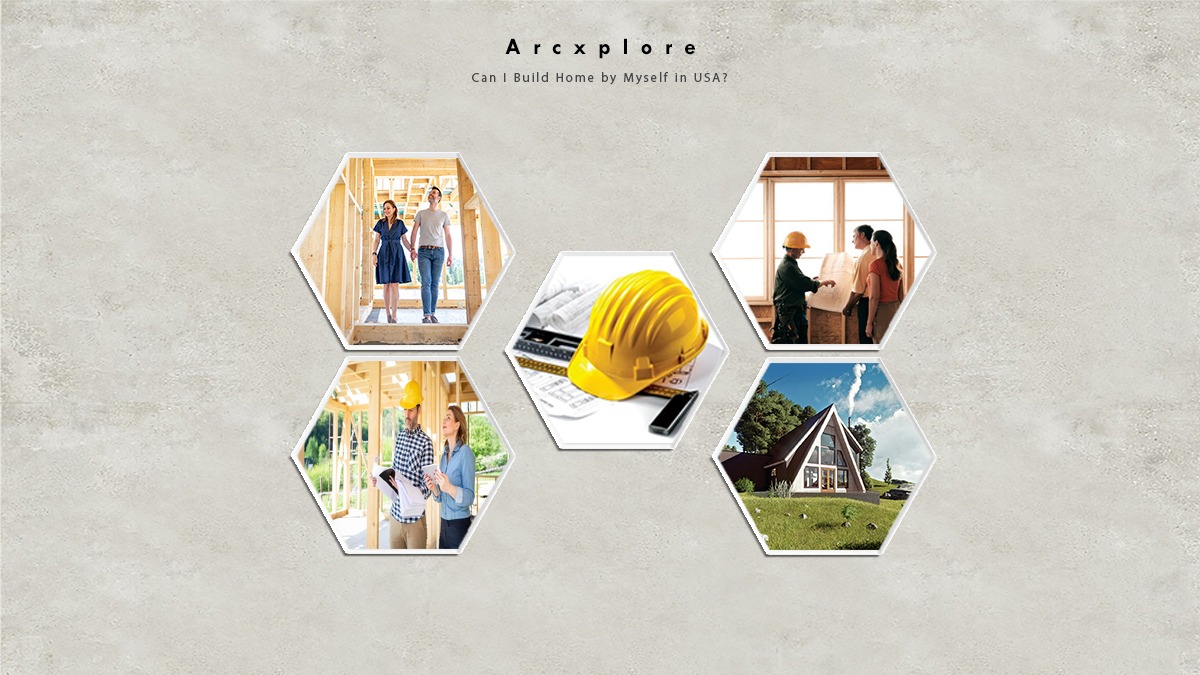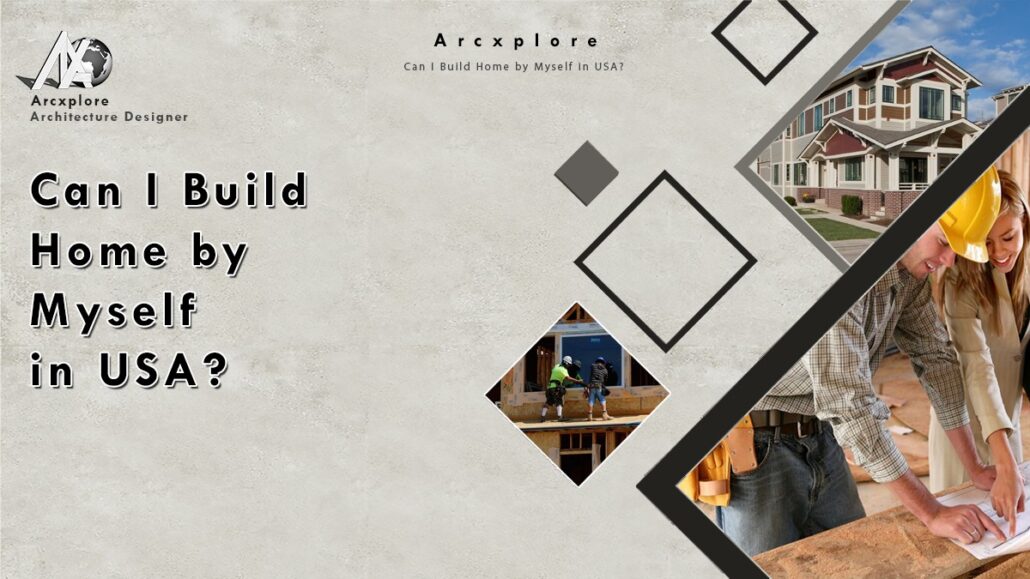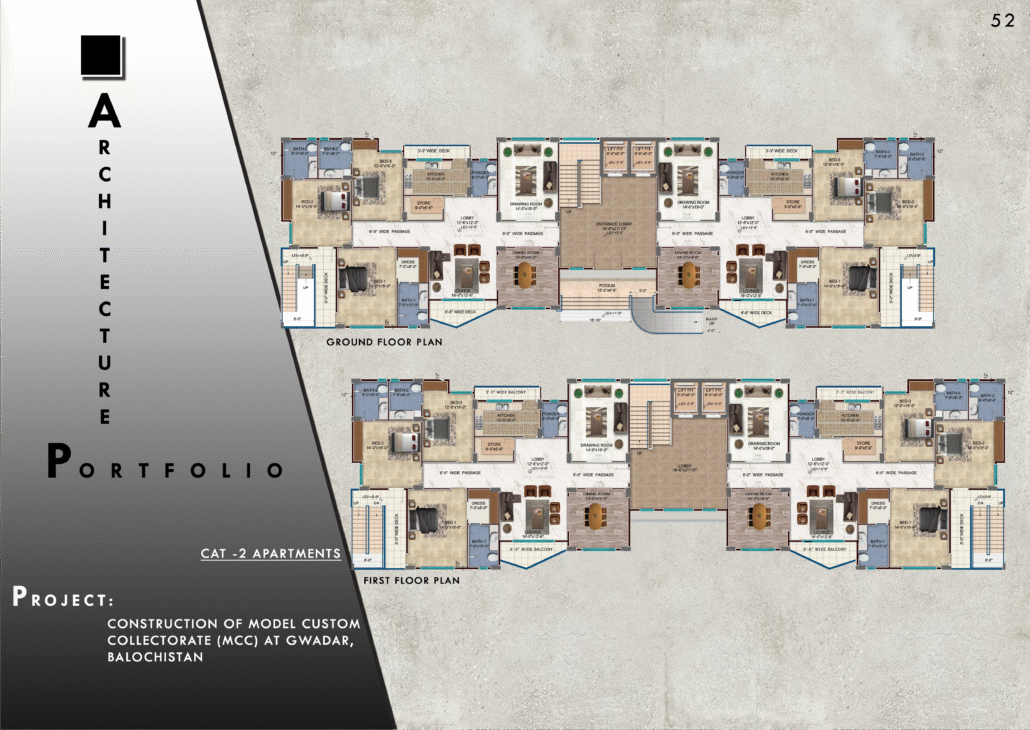Procedure of Build Home by Yourself in USA
Introduction:
Can I Build Home By Myself in USA?
Build a home by myself in the USA is a complex and challenging undertaking, but it is possible for those who are willing to invest the time, effort, and resources required. While it can be a rewarding experience, it is not for the faint of heart, and it is essential to understand the various aspects involved in constructing your own home.

Legal Considerations:
Can I Build Home By Myself in USA?
It is essential to study and comprehend the legal and regulatory aspects of building before starting a do-it-yourself home build. Zoning laws, building codes, permits, and other legal procedures can be complicated and differ depending on the locality. For your home to be safe and uphold local standards, you must abide by these rules.
Skills and Knowledge:
A broad range of abilities and expertise are needed to build a house. You must be skilled in all aspects of building, including plumbing, electrical, and framing. If you don’t have these abilities, you could have to pay experts or take classes to get them.
Design and Planning:
Make a thorough strategy for your house first. This covers the materials you’ll utilize, the layout, and the architectural design. To make sure that your designs satisfy local building codes as well as your needs, it is advisable to collaborate with an architect or designer.
Permits and Inspections:
A crucial step in the procedure is setting up inspections and obtaining the required permits. In order to make sure you’re following all rules, you’ll need to collaborate with your neighborhood building department.
Budgeting and Financing:
Constructing a house can be costly. You’ll have to arrange funding and make a budget. Having a safety net for unforeseen expenses is crucial since they frequently occur during construction.
Site Selection:
Select a good place for your house. Think about things like utilities, accessibility, and environmental impact. The land may need to be cleared and ready for construction.
Utilities and Infrastructure:
Establish connections between your house and the gas, electricity, water and sewage systems. This could entail installing electrical wiring, laying pipelines, and excavating trenches.
Foundation and Framing:
The foundation of your house is a crucial component. For it to sustain the structure, it needs to be level and strong. After that comes framing, which builds your home’s framework. This is the step when accuracy is crucial.
Roofing and Exterior:
Your home’s external materials and roof shield it from the weather. This covers doors, windows, siding, and roofing. Installing things correctly is essential to making sure your house is waterproof.
Electrical and Plumbing:
Plumbing systems, outlets, switches, and electrical wiring must be installed. These have to be completed in accordance with regional construction codes and safety requirements.
Insulation and HVAC:
Installing heating, ventilation, and air conditioning (HVAC) systems for comfort and insulation for energy efficiency will make your house more comfortable. To keep a comfortable living space, both are necessary.
Interior Finishes:
This covers the inside components such as countertops, cabinets, flooring, and plasterboard. To get a polished appearance, attention to detail is essential.
Landscaping:
Once your home is finished, you can improve its utility and curb appeal by doing some landscaping.
Testing and Inspections:
Several tests and inspections will be required throughout construction to guarantee your home is safe and complies with local codes.
Health and Safety:
Working with large, potentially dangerous gear and tools is a requirement of building a home. Prioritizing safety, donning the proper protective gear, and adhering to safety procedures are crucial.
Time Commitment:
Depending on the complexity of the project and your level of experience, building a home is a labor-intensive process that may take months or even years to finish.
Tools and Equipment:
Depending on the work at hand, you’ll need access to a wide range of tools and equipment, from simple hand tools to large machines. Purchasing or leasing these instruments may raise your overall expenses.
Quality Control:
It is your duty as the builder to guarantee that the job is done to a high standard. This entails paying close attention to the little things, checking your work as you go, and fixing anything that needs fixing.
Resource Management:
Managing resources and building materials effectively is essential to preventing waste and overspending. Planning and material ordering will need to be done well in advance.
Challenges and Stress:
Constructing a house can be very demanding. It calls for a tremendous degree of decision-making, problem-solving, and coordination. Unexpected obstacles could arise and put your perseverance and patience to the test.
Community and Neighbors:
Remember that your building project might have an impact on your neighbors. Throughout the process, it’s critical to stay in touch with them, cause as little interruption as possible, and behave well towards them.
Hiring Professionals:
Certain tasks, like electrical and plumbing work, can call for professional knowledge even if you’re performing most of the job yourself. It is important to use licensed professionals to complete these jobs.
Sustainability and Energy Efficiency:
Long-term cost savings can be achieved by adding sustainable and energy-efficient elements to your house, such as insulation, solar panels, and energy-efficient appliances.
Resale Value:
Consider the long-term effects of the structure and architecture of your house. Think about how your decisions might impact the property’s resale value if you ever decide to sell it.
Building Materials:
Select sturdy, high-quality building supplies. Although they can be more expensive up first, these can eventually save you money on upkeep and repairs.
Local Building Codes and Climate:
Make sure the design and building decisions you make are suitable for the site where you intend to use them. Take into account elements like the surrounding climate, earthquake activity, and other circumstances.
Emotional Investment:
Constructing a house is an extremely private job. Never undervalue the emotional toll it can take on your life, and be ready for a significant emotional commitment.
To sum up, building a house on your own in the US is a difficult undertaking that calls for extensive planning, a variety of abilities, and a sizable investment of time and money. It is not for everyone, even though it can be a wonderful experience. It’s critical to conduct in-depth study and planning, seek professional advice when needed, and be aware of the logistical, legal, and financial difficulties that may arise. You may design a distinctive and customized home that meets your wants and tastes if you are well-prepared and dedicated.








